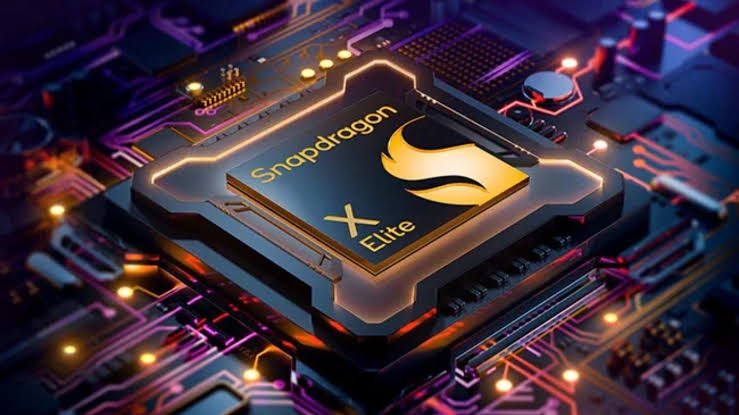The mobile processors also known as System on Chips (SoCs) have undergone a remarkable transformation in the last two decades. The evolution of mobile processors has been occasioned by the need to have higher performing, efficient and feature enhanced smartphones and tablets.
The main competitors on this level are the products of Qualcomm’s Snapdragon series and Apple Silicon processors. While A-series and M-series have been crucial in defining how all these function on various classes of the mobile gadgets; from speed, multitasking to power efficiency and incorporation of artificial intelligence.
Let’s take a closer look at the evolution of the mobile processor, the place of which belongs to the Snapdragon series introduced in this article, as well as revolutionary innovations from Apple Silicon.
The Evolution Of Mobile Processor
When Snapdragon and Apple Silicon were not around, only core processors of mobile devices were essential that provided capabilities for calling, messaging, and running uncomplicated applications.
ARM (Advanced RISC Machines) processors were widely introduced to the mobile sector mainly because of low power consumption coupled with moderately efficient performance.
Smart phones of the past with operating systems such as the Symbian one or young generation Android devices boasted of single core ARM processors with restricted multitasking support.
The increased use of mobile phones and especially the advancement of these phones to Smartphones called for higher processing power. Such changes as mobile internet, touch screens and, hence, application shops in the late 2000s demanded higher performance.
This demand increased the necessity of the first attempts to create multi-core processors, which are capable to perform more sophisticated computations necessary for such operations as media playing, web surfing or gaming.
In the mobile processor market, Qualcomm began its offering with the Snapdragon series in the year 2007.
The preceding chips of Snapdragon are considered to be some of the first chips in the market that have bundled ported components including the CPU, GPU, Modem etc. Appreciation for Snapdragon processors was received swiftly, which offered as much performance as needed, battery longevity and connectivity solutions.
- Snapdragon 800 Series
The Snapdragon 800 was introduced in 2013 and can be considered as the line of smartphones correspondingly becoming a step forward in terms of power.
It included Krait CPU cores, Adreno GPUs, and integrated 4G LTE modems thus it became the first choice for high-end Android devices.
The 800 class of Apex established new parameters of mobile games, photos, and video, which were used by Samsung, LG, and HTC, among others.
- Snapdragon 845 and 855
The former, launched in early 2018, is highly enhanced with AI processing, functioning, and integrated camera technologies whereas the latter, known as the Snapdragon 855, was revealed in 2019.
These processors came with Kryo CPU structure and Adreno 600 series GPU that advanced graphics rendering and energy management. At last, with the Snapdragon 855 introduction, the first set of 5G devices was possible since it was integrated with these features.
- Snapdragon 888 and Beyond
The latest of its kind is the Qualcomm Snapdragon 888 released in the year 2020 and made using 5 nm process technology.
All of that was done with X60 5G modem, AI Engine, and upgraded ISP which improved not only the mobile photography but AI as well. This was succeeded by the 2021’s Snapdragon 8 Gen 1, which takes performance, graphics, as well as power efficiency a notch higher.
Read Also: Worldwide smartphone shipments increase to 285m, Samsung retains lead
The Advent of Apple Silicon
As Qualcomm was building its strong position in the ecosystem of Android, Apple had quite an untraditional strategy. It is noted that in 2010 the first proprietary Apple chip – A4 combined in iPhone 4.
Unlike the Snapdragon series with the same cores available for many manufacturers, Apple’s chips were fully tailored for their devices only which promoted a deeper unification of hardware and software layers.
- Apple A-Series Chips
Apple’s partners began with matching the new A4 chip Apple was using. The A-series chips in Apple soon followed a steady pattern where with each new release there was a clear upgrade in performance and power saving capabilities.
With the A5 chip, Apple incorporated dual core processing, with the A7 incorporating the first 64-bit mobile processor, and the A9 offering desktop class processing to the smart phones.
The Bionic chip that was installed in an iPhone X launched in 2017 has the first designed GPU by Apple and the Neural Engine meant for the execution of artificial intelligence processes to further levels in mobile processors.
- The A14 Bionic
Apple launched the A14 Bionic in mid the year 2020 and this is the first Mobile Processor in the world that is developed on the 5 nm process technology.
The A14 Bionic gave a CPU boost of 40 percent along with a GPU boost of 30 percent as compared to A13 Bionic. It also has an M16 Neural Engine which can perform 11 trillion operations per second specifically aimed for AI & ML uses.
- Apple M1 and Beyond
It was in 2020 that the company applied its knowledge of designing chips for mobile devices for something other than Macs with the M1 chip- the first Apple ARM-based processor for the Macs.
With regards to the M1 chip, it introduced power efficiency and performance originating from the A14 Bionic through the mobile processors to the laptop and desktop computer.
The M1 integrated the CPU, GPU, Neural Engine and memory into one chip as a result the performance was very high and efficiency of the battery was improved.
This change was a decisive break from Intel processors that Macs had been using and stressed the company’s intent to manage both the hardware and the software of its devices.
Read Also: Exciting New SmartPhones to Be Launched in August 2024: What to Expect
Snapdragon Vs Apple Silicon
While both Snapdragon and Apple Silicon processors have pushed the envelope in mobile computing, there are key differences between Snapdragon Vs Apple Silicon
- Customization and Integration: Upstream integration of both the hardware and software makes it possible for Cupertino to make certain optimizations that are difficult for third-party processors such as Qualcomm’s snapdragon.
This integration results in improved efficiency, power, and protection on Apple products.
- Performance: Consecutively, Apple’s A-series and M-series have been reported to beat Snapdragon chips in terms of raw performance as well as overall utilization in the last few years.
Apple Silicon has proved to be more efficient and has a faster processing power especially with the release of the M1 processor that competes with the desktop one.
- Flexibility: These snapdragon processors are integrated into different gadgets such as smartphones, laptops, among others and of different brands.
This flexibility has made Snapdragon to be the backbone of the Android while Apple processors are unique to Apple products.
The Future of Mobile Processors
The advancement in the mobile processors is not something that halted at some point in time.
Qualcomm has not left the market and still progresses its snapdragon series, currently snapdragon 8 Gen 3 is predicted to introduce new AI, Gaming, and 5G Features.
At the same time, the competitor, Apple, could maintain the pressure on with its A-series and M-series chips and release even more potent and efficient chips in the future.
Thus, with mobile devices being a focal part of people’s lives, the function of processors in delivering new experiences through AI, AR, and other novel technologies will only expand.
This struggle between Qualcomm and Apple will go on. There is only one beneficiary that is the consumers , faster, more capable and efficient devices are being developed.
Conclusion
The evolution of mobile processors is indeed a game changer.
Talking about ARM processors for mobile devices, from the very first generation to the highly developed Snapdragon and Apple Silicon, the development is rather impressive.
Several of these processors have made smartphones to be referred to as computing mobile devices that are capable of performing sophisticated computations and running enhanced applications besides giving out delightful user interfaces.
Qualcomm and Apple are not standing still and the carrier of the mobile processing will only bring further innovations for the advancement of the mobile processing that will define the next era of mobile technology.




